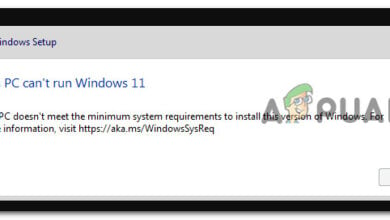Can’t Boot Windows 11 After Enabling Hyper-V Virtualization? Try these fixes
As Windows 11 gets in the hands of early adopters, we’re slowly discovering bugs and glitches that we’re not an issue with previous Windows versions. Such a case has to do with Hyper-V Virtualization – once you enable it from your BIOS in order to use core isolation, you might find that your PC no longer boots up.

Most users dealing with this issue are reporting that once Hyper-V virtualization is enabled from BIOS, the booting sequence won’t complete. But as soon as you disable Virtualization from BIOS, all is well again.
After investigating this issue thoroughly, it turns out that there are several underlying causes that might be responsible for the apparition of this issue. Here’s a rundown of every possible culprit that might prevent your Windows 11 computer to boot while virtualization is enabled:
- Intrusion caused by 3rd party app – As it turns out, certain 3rd party applications (particularly security supporting tools for banking apps) have the potential of causing this weird behavior on Windows 11. Trusteer Rapport and similar other apps are known to prevent users from booting while virtualization is enabled. In this case, you can fix the issue by temporarily disabling virtualization and uninstalling the problematic 3rd party apps before re-enabling virtualization.
- Boot Repair Loop – Another scenario that might cause this problem is if enabling Hyper-V also sets up the AUTO flag on your BCD, triggering the notorious ‘Boot Repair Loop’. This was an ongoing issue on previous Windows versions and it has unfortunately made its return on Windows 11. Fortunately, the fix is the same – boot in safe mode and change the behavior of HypervisorLaunchType.
- System file corruption – There are situations where this issue is entirely caused by some kind of system file corruption. This might facilitate an issue with how virtualization is managed on your PC. To fix it, you can try using a healthy restore snapshot or going for a repair install procedure.
Uninstall Trusteer Rapport (or similar application)
I know this might seem like an unlikely culprit, but a lot of users using security apps recommended by banks have noticed that the culprit responsible for preventing Windows 11 from booting is actually an app called Trusteer Rapport.
There might be other similar apps causing the same kind of issue, but so far Trusteer Rapport is almost solely blamed for this kind of issue.
Unfortunately, if you’re very dependant on Trusteer Rapport, there isn’t a viable fix yet that will enable you to keep both of these components – It’s either one or the other.
If you can’t do without Trusteer Rapport, the only way to allow your Windows 11 computer to boot with virtualization enabled is to get rid of the conflicting software.
Note: It’s possible that a different app utilizing the same segmentation technology is causing this behavior. If you have a suspect, uninstall it as we’ll do below with Trusteer Rapport.
Follow the instructions below to temporarily disable the virtualization technology so you can disable the Trusteer Rapport (or similar app):
- Boot your computer normally and press the Setup screen immediately after you see the initial screen to access your BIOS settings.

Accessing the BIOS menu Note: If the setup key is not displayed on the screen, look online for instructions on accessing your BIOS settings according to the official documentation provider by your motherboard manufacturer.
- Once you’re inside the BIOS menu, make your way to the Advanced settings and search for a sub-menu named CPU Configuration.
- Once you’re inside, look for an option named Secure Virtual Machine Mode and set it to Disabled.

Secure virtual machine mode Note: The names and locations of the virtualization setting will be different from manufacturer to manufacturer.
- Once you ensured that virtualization is disabled, save the modification and allow your PC to boot normally.
- After your PC boots back up, press Windows key + R to open up a Run dialog box. Inside the Run box, type ‘appwiz.cpl’ and press Enter to open up the Programs and Features menu.
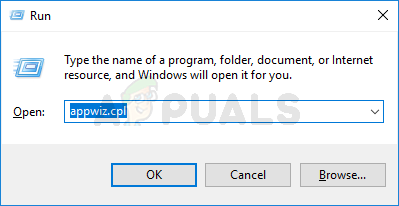
Opening up the Programs and Features menu - Once you’re inside the Programs and Features menu, scroll down through the list of installed programs and locate the entry associated with Trusteer Rapport (or the similar app that you suspect for causing this issue).
- After you manage to locate it, right-click on it and choose Uninstall from the context menu that just
appeared.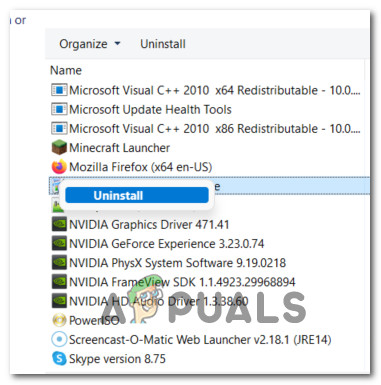
Uninstalling the Trusteer Rapport (or similar app) - Inside the uninstallation screen, follow the on-screen instructions to get rid of the app.
- Reboot your PC and press the Setup key during the initial startup screen to return to the BIOS screen in order to re-enable virtualization.

Secure virtual machine mode - Let your Windows 11 boot normally and see if the issue is now fixed.
If the problem is still not fixed, move down to the next potential fix below.
Fix the Boot Repair Loop
Unfortunately, that notorious issue that plagued the previous Windows version (Boot Repair Loop) is back with Windows 11. Apparently, when you enable Hyper-V to facilitate core isolation (or whatever else you want to get going), there’s a slight chance an important flag will be set to AUTO, which in turn causes the Boot Repair loop.
Resolving this particular issue is exactly the same as it was with previous Windows iterations – You’ll need to boot in Safe Mode, then set HyperVisorLaunchType to OFF before rebooting and rebuilding the corrupted BCD data.
For step by step instructions on how to do this, follow the instructions below:
- Boot your computer normally and insert a compatible installation media.
Note: If you don’t have compatible installation media, you can easily create a bootable flash drive with Windows 11 by following these instructions. - Once asked if you want to boot from the installation media, press any key to boot from it.

Press any key to boot from installation media Note: If you don’t get the screen asking you to boot from the installation media despite you plugging in the flash drive, you need to access your BIOS settings and change the boot order.
- Once you arrive at the first Windows Setup screen, click on Repair this PC in the top-left corner of the screen.
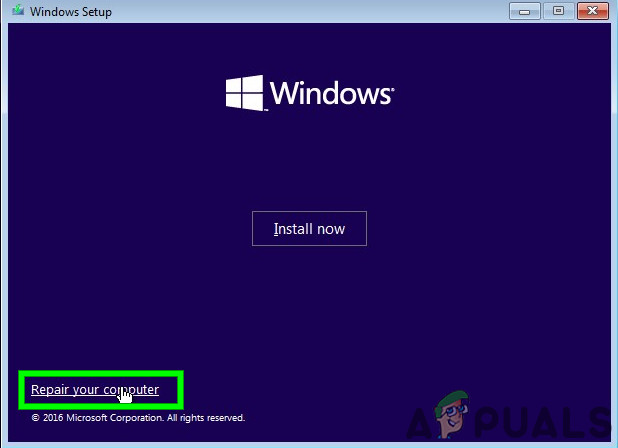
Repair your computer - Once you’re inside the first Advanced Startup screen, click on Troubleshoot from the list of available items.
- Inside the Troubleshoot tab, click on Advanced Options from the list of items, then select Startup Settings from the list of options.
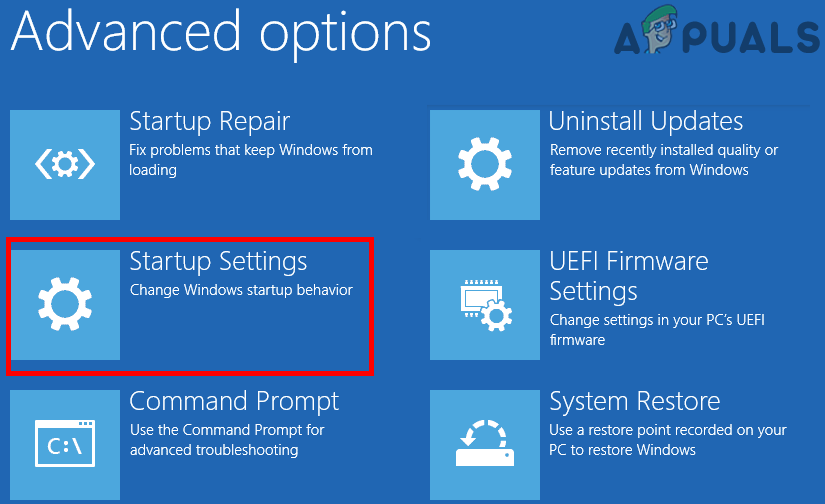
Accessing the Startup Settings menu - At the next screen, click on Restart and wait until your PC restarts directly into the Startup Settings screen.
- Once you’re inside the Startup Settings screen, press the F5 key to boot Windows 11 in safe mode with networking.
- After your Windows 11 PC boots into safe mode, press Windows key + R to open up a Run dialog box. Inside the Run box, type ‘cmd’ and press Ctrl + Shift + Enter to open up an elevated Command Prompt.
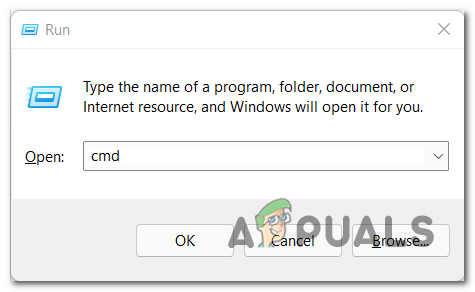
Open up an elevated CMD prompt - If you’re prompted by the User Account Control (UAC), click Yes to grant admin access.
- Once you’re finally inside the elevated Command prompt, type the following command and press Enter:
BCDedit /set hypervisorlaunchtype Off
- Once the command is processed successfully, reboot your PC and enable virtualization from BIOS before booting normally to see if the problem is now fixed.
In case the issue is still not resolved, move down to the next potential fix below.
Use a healthy System Restore point
If the methods above were not effective in your case, one last thing you can do before refreshing every system file is to restore a healthy System Restore snapshot using the System Restore utility.

If the problem is related to a recent system change that facilitated a conflict with the virtualization technology, chances are this method will fix it.
But in case you end up using a system restore point to no success or you have no viable restore points to choose from, move down to the final potential fix below.
Perform a Repair install
If you’ve come this far, the only viable option for you is to replace every system file in order to take care of every potential corrupted system file element that might be causing an issue with the Hyper-V Virtualization technology.

You can always clean install Windows 11, but a better way to go around this issue is to perform a repair install (in-place upgrade) – This operation will allow you to keep all your personal files, apps, and documents that are stored locally. This operation will only touch the Windows 11 system files.





